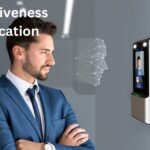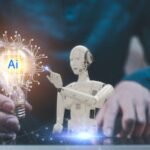Have you ever considered a world without third-party censorship where you have complete privacy controls over the data you share? An internet that responds to your query correctly and provides more individualized responses, acting more like a human would. Welcome to Web 3.0, whose goal is to create a totally decentralized internet in order to address this issue. Without relying on a single organization or server, every user will have access to data, assets, and apps.
This would make it considerably more secure and resistant to censorship or manipulation, enabling people all around the world to fully manage their data and online activity.
Web 3.0 will also make it possible for things like:
- Increased privacy using distributed ledger technology and cryptography.
- Peer-to-peer transactions
- Lower latency between nodes, which speeds up transactions (particularly with centralized organizations).
- Due to its dispersed structure, it has better scalability for larger businesses.
Describe Web 3.0
Web 3.0, is an upgrade of the current internet architecture and uses machine learning techniques to provide a new level of automation and intelligence. It has evolved into the ideal illustration of digital transformation by understanding data to carry out tasks like NLP and deep learning.
Additionally, it may find use in the healthcare industry as AI-driven systems may examine medical records. Since technology will be able to comprehend patient data far better than any human doctor ever could, automated diagnosis will likewise be feasible.
Let’s Discuss About Web 1.0, Web 2.0, and Web 3.0
Web 1.0
Static web pages and discrete content are the main features of Web 1.0. Information display on the internet is its main purpose. Basic HTML is used, but no supporting scripting languages are available.
Web 1.0 websites do not permit user interaction or collaboration, hence users are unable to alter the website’s content or appearance in any manner. These websites were primarily created for desktop computers, thus they are rarely mobile-friendly.
Main design requirements for a Web 1.0 site are as follows:
Content
Any successful website must have high-quality content, especially those from the Web 1.0 period when text predominated and graphics were at best secondary. Your material must be pertinent to the requirements of your users, captivating enough to maintain their attention, and delivered in an accessible manner (such as HTML).
Visuals
This will make your site appear more polished and welcoming while also increasing user engagement rates!
User Experience Design (UX)
Effective UX design involves foreseeing potential challenges people might have when accessing or using your website before it even goes live, such as poor loading times or perplexing menus, and resolving these by making changes before launch. The most common way to do this is through user testing and input from a web design or usability professional.
Web 2.0
Web 2.0 is centered on dynamic web pages and interactive web apps that offer rich user experiences.
Important Web 2.0 Features
- Social networking solutions enable real-time communication and collaboration between site administrators and users.
- A website or blog can leverage applications like audio/video streaming, mashups, blogging platforms, and RSS feeds because they are extremely interactive.
- Users may choose who has access to their data and how it is utilized inside the system.
Web 3.0
Finally, Web 3.0 includes all the features of earlier iterations, including semantic analytics (data interpretation) and interaction/collaboration capabilities.
When displaying information, it takes context into account so that it can be customized based on user preferences based on their prior search history or behavior within an application (like eCommerce stores). We also observe elements like machine learning.
How Does Web 3.0 Work?
Web 3.0 offers a more secure online experience than ever before by connecting consumers directly to content through decentralized networks like blockchain or peer-to-peer networking technologies.
Since they are no longer dependent on centralized servers for their operations, this method also enables developers to produce speedier and more effective applications.
Instead of relying on a single central server, like standard websites do currently, DLT systems retain an immutable record of transactions across several nodes.
It is more difficult for bad actors to alter data or commit fraud because each node retains all transaction records in this manner. This is owing to the fact that they would require simultaneous access from numerous devices, which is practically not achievable given the decentralization and encryption methods employed by DLTs like the Ethereum or Bitcoin blockchains.
Additionally, since only those with the proper authorization can read specific information about a user’s identity or financial activity owing to blockchain, the risk connected with using sensitive personal information online is reduced.
7 Web 3.0 Technologies That Will Blow Your Mind
1. Artificial Intelligence
In order to better analyze user data and offer personalized experiences on websites and apps, Web 3.0 makes use of AI technology. Users may now quickly find what they need without having to manually search through a lot of data thanks to this. Artificial intelligence for Web 3.0 can automate several jobs and procedures, like data sorting and recommendation-making.
2. Natural Language Processing
NLP enables computers to comprehend natural language questions, greatly simplifying communication between humans and machines. By doing so, they will be able to do jobs without the need for complicated technical commands that only programmers can comprehend.
3. Distributed Ledger Technology
By utilizing blockchain technology, which establishes an immutable ledger system where transactions are recorded publicly yet securely across several computers at once, DLT enables users to safely store their digital assets, such as bitcoins. As a result, no one thing has complete influence over them.
4. Machine Learning
ML enables more accurate predictions for organizations without user involvement by teaching computers to make judgments based on given data and past experiences.
5. Semantic Web
The semantic web is a brand-new layer of the World Wide Web that adds more context and meaning to material. This enables search engines to better comprehend user queries and deliver more pertinent results.
6. Tokens and NFTs
Tokenization and non-fungible tokens (NFTs), the technology that powers Web3 apps, are among the most exciting. Users can establish digital assets that are safeguarded on the blockchain through tokenization.
Unique, collectible digital assets known as NFTs are kept on a blockchain database.
7. Animation and 3D Graphics
The 3D graphics and animation that power Web3 applications is another key technology. Developers may produce a 3D depiction of objects and environments for usage on the web that is remarkably realistic thanks to developments in GPU-accelerated computing.
Because of this, users can enter a virtual world that is considerably more realistic and immersive than one could achieve with conventional 2D visuals. Furthermore, intricate movements and interactions can be added to characters or situations using advanced animation techniques.
How Will Web 3.0 Help Businesses?
Web 3.0 presents a number of benefits that can assist business owners transition their operations into the digital era as a completely new approach to the internet and its capabilities:
1. An Increase in Customer Engagement
Web3 Development Company in Dubai offers specialized experiences for their audience on every device or platform by utilizing more cutting-edge technologies like chatbots and AI-powered personalization algorithms. This might increase brand lead generation rates and overall user satisfaction levels.
2. More Reliable Analyses
Businesses can learn more about consumer behavior in real time with better datasets gathered from outside sources (or even from customers). They will be able to decide more swiftly regarding marketing campaigns, product launches, and other strategic choices as a result of this.
3. Greater Opportunities for Automation
Companies can automate repetitive procedures that typically require manual involvement by utilizing technology like blockchain and machine learning/AI algorithms, freeing up resources that can be used elsewhere in the organization’s operations.
4. Improved Security
Businesses may be much more confident about the security of their data and transactions thanks to distributed ledger technology like blockchain. This increases customer and partner trust since businesses can be certain of the integrity and correctness of their records.
5. Enhanced Collaboration Possibilities
The use of distributed ledgers, such those built on blockchain technology, allows for more effective collaboration between many stakeholders. The outcomes for all parties involved are improved as transactions become simpler to track and verify and offer a more transparent view of how processes are being handled across various businesses.
6. Supply Chain Management
Businesses may be able to better track and manage their supply chain operations, from raw materials to production procedures to final product distribution, if blockchain technology is integrated into Web 3.0. By optimizing production processes and ensuring that all value chain partners comply with industry norms, this would save costs.
Applications of Web 3.0 in Different Industries
Healthcare
Machine learning algorithms can identify diseases more quickly and accurately than conventional techniques thanks to Web 3.0. Without requiring human interpretation or interaction, it will be simple and rapid to study patient records using massive datasets.
Finance
Artificial intelligence (AI)-powered automated financial advice is useful for banks. Customers will be able to get recommendations based on their own interests while still being in compliance with industry rules thanks to this.
Education
Students can participate in interactive lessons with better access to educational resources through virtual reality (VR), which gives them richer learning experiences than conventional techniques.
Entertainment & Media
Presently, content creators are utilizing VR to give viewers unique experiences that provide unmatched engagement. Athletes can use 3D avatars to communicate with their fans in everything from interactive movie trailers and product demos to virtual concerts;
How Can Web 3.0 Impact Your Life?
Businesses can boost productivity with Web 3.0 technologies by automating processes like customer service inquiries, marketing campaigns, and inventory management.
Based on precise data analysis capabilities made available by the Internet of Things (IoT) technology trend, which is increasingly gaining acceptance in today’s society, this integrated system can also help customers make smarter judgments.
In the end, Web 3.0 offers us a fantastic opportunity to improve our online interactions and stay connected like never before!
Read more: gpt66x














